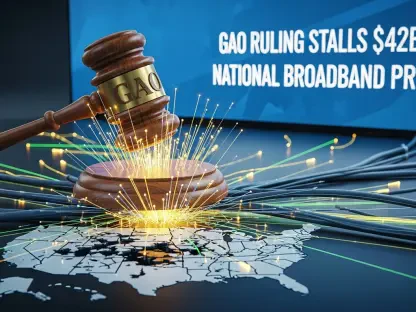In a transformative move for the U.S. wireless telecommunications sector, T-Mobile’s $4.4 billion acquisition of UScellular has sparked intense discussion about the future of competition and connectivity. Approved by both the Department of Justice (DOJ) and the Federal Communications Commission (FCC) this year, the deal not only merges two significant players but also highlights the stark challenges mid-sized carriers face in keeping pace with industry giants. As T-Mobile integrates UScellular’s assets, the ripple effects are poised to alter the competitive landscape, impact millions of customers, and potentially redefine access to advanced networks in rural areas. This merger isn’t just a business transaction; it’s a signal of deeper shifts in market dynamics, where consolidation seems inevitable for survival. What does this mean for consumers, regulators, and the broader industry? The answers lie in dissecting the layers of this landmark deal and its far-reaching implications.
Shifting Sands of Competition
The T-Mobile-UScellular merger lays bare the harsh realities confronting smaller wireless carriers in today’s market. UScellular, grappling with a dwindling customer base, elevated pricing, and insufficient capital to transition to 5G technology, was labeled a “non-viable competitor” by the DOJ. This assessment paints a grim picture of the struggles mid-sized players endure against the towering presence of the Big Three—T-Mobile, AT&T, and Verizon. By absorbing UScellular, T-Mobile aims to bring approximately 4 million customers into its fold, promising them access to a more robust network. However, this consolidation comes with a significant caveat: the Big Three now hold over 80% of the U.S. wireless spectrum, a concentration of power that could dampen competitive vigor and limit innovative breakthroughs in the sector over time, raising critical questions about market balance.
Beyond the immediate customer transition, the competitive implications of this merger extend to how it reshapes industry rivalries. For T-Mobile, acquiring UScellular isn’t merely about expanding its subscriber count; it’s a strategic maneuver to solidify its standing against AT&T and Verizon, particularly in underserved markets. The integration is expected to streamline operations and enhance service delivery, potentially setting a new benchmark for network quality among the giants. Yet, this move also narrows the field of players capable of challenging the status quo, leaving smaller regional carriers even more vulnerable to being squeezed out. As market power consolidates, the risk of reduced consumer choice looms large, prompting scrutiny over whether short-term gains in service quality will come at the expense of long-term diversity in the wireless arena.
Regulatory Balancing Act
Regulatory approval of the T-Mobile-UScellular merger by the DOJ and FCC reflects a calculated shift in policy priorities within the wireless industry. The decision to greenlight the deal was rooted in a pragmatic view: immediate improvements in network infrastructure and rural connectivity outweigh the potential drawbacks of diminished competition. With rural 5G coverage projected to expand by 50% as a result of this merger, the focus on bridging connectivity gaps in underserved areas is clear. This approach underscores a willingness to accept consolidation when it aligns with tangible consumer benefits, particularly for communities long neglected by advanced wireless services. However, it also reveals a tension between addressing current needs and safeguarding a competitive market environment for the future.
This regulatory stance carries significant implications for how consumers experience wireless services going forward. While the promise of enhanced service quality and broader 5G access is a welcome development for many, especially in rural regions, there’s an underlying concern about the long-term effects of market concentration. With fewer players controlling the majority of spectrum resources, the potential for price increases or stifled innovation becomes a real threat. Regulators appear to be banking on the short-term upside of network upgrades to justify their decision, but the question remains whether this consolidation will ultimately limit options for consumers. The balance between immediate gains and future market health is delicate, and the outcome of this merger could set a precedent for how similar deals are evaluated in the coming years.
Infrastructure as a New Frontier
One of the most intriguing outcomes of the T-Mobile-UScellular merger is the establishment of Array Digital Infrastructure, a rebranded entity tasked with managing 4,400 of UScellular’s towers and 70% of its spectrum assets. This development signals a broader trend in the telecom sector of decoupling infrastructure from retail operations, focusing instead on monetizing assets through tower rentals and spectrum licensing. Particularly in rural markets where 5G expansion is a pressing need, Array’s holdings, including valuable low-band spectrum, position it as a key player. A 15-year master license agreement with T-Mobile for tower usage further ensures a steady revenue stream, while potential partnerships with AT&T and Verizon could amplify its impact in closing coverage gaps across the country.
The rise of Array Digital Infrastructure also opens up fresh investment opportunities within the wireless industry. By prioritizing infrastructure over traditional carrier services, Array taps into a growing demand for tower colocation and spectrum resources critical to 5G deployment. Its strategic focus on rural areas, often overlooked by larger carriers, makes it an attractive prospect for investors looking to capitalize on the next wave of connectivity expansion. Additionally, this model of asset monetization could inspire other carriers to rethink their approach, potentially leading to a proliferation of infrastructure-focused entities. As the demand for robust 5G networks continues to surge, the success of Array may redefine how value is created in telecom, shifting the emphasis from subscriber numbers to strategic asset management.
T-Mobile’s Path to Dominance
T-Mobile’s history of navigating large-scale mergers, such as those with MetroPCS and Sprint, instills confidence in its ability to seamlessly integrate UScellular’s operations. Projections suggest this latest acquisition will yield annual cost savings of $1 billion and increase average revenue per account by 12–15%, highlighting the financial upside of the deal. Furthermore, the addition of 21 new markets to T-Mobile’s 5G footprint strengthens its competitive edge, particularly in rural broadband and international roaming services. This strategic expansion not only bolsters T-Mobile’s position against rivals like AT&T and Verizon but also enhances its reputation as a leader in network innovation, capable of delivering cutting-edge connectivity to diverse customer bases across the U.S.
However, the road to full integration is not without obstacles for T-Mobile. Significant capital investments are required to upgrade and harmonize UScellular’s network infrastructure with its own, a process that could strain resources in the short term. Additionally, potential regulatory challenges loom on the horizon, especially if Array Digital Infrastructure seeks to sell spectrum assets in the future, which could attract scrutiny from the FCC or DOJ. These hurdles underscore the complexity of merging two distinct entities while maintaining service quality and regulatory compliance. Despite these challenges, T-Mobile’s proven track record suggests it is well-equipped to manage the transition, though the scale of investment and oversight required will test even its robust operational capabilities.
Signals of a Changing Landscape
The T-Mobile-UScellular merger mirrors a broader trend in the wireless industry where mid-sized carriers find it increasingly difficult to compete with the scale and resources of the Big Three. UScellular’s struggles—financial constraints, declining subscribers, and outdated infrastructure—are emblematic of the systemic barriers smaller players face. This deal suggests that consolidation may be the most feasible route for such carriers to ensure network modernization and remain relevant, even if it means losing their independent identity. The outcome could encourage similar acquisitions in the future, further concentrating market power while simultaneously driving investment in critical areas like rural connectivity that smaller entities often cannot afford to address on their own.
Another significant trend illuminated by this merger is the growing emphasis on infrastructure monetization as a viable business strategy. The success of entities like Array Digital Infrastructure, which prioritizes tower rentals and spectrum licensing, points to a shift in how telecom companies create value. As demand for 5G infrastructure escalates, this model could attract substantial investment, reshaping industry priorities away from traditional retail operations. This evolution suggests a future where wireless services are supported by a robust backbone of independent infrastructure providers, potentially fostering innovation in network deployment while challenging carriers to adapt to a changing economic landscape.
Reflecting on a Pivotal Moment
Looking back, the T-Mobile-UScellular merger stood as a defining chapter in the U.S. wireless industry, encapsulating the inevitable push toward consolidation while unlocking new pathways for growth. It addressed the critical shortcomings of mid-sized carriers, bolstered rural connectivity, and spotlighted the rising importance of infrastructure as a standalone asset. For T-Mobile, the integration marked a leap forward in market strength, despite the hurdles of cost and compliance. Moving ahead, stakeholders should closely monitor how this concentration of spectrum among the Big Three influences pricing and innovation, advocating for policies that preserve competitive balance. Investors might consider exploring opportunities in infrastructure-focused ventures like Array Digital Infrastructure, which could drive the next wave of telecom value creation. This merger offered a blueprint for navigating industry challenges, urging a proactive approach to ensure that connectivity advancements benefit all corners of society.









